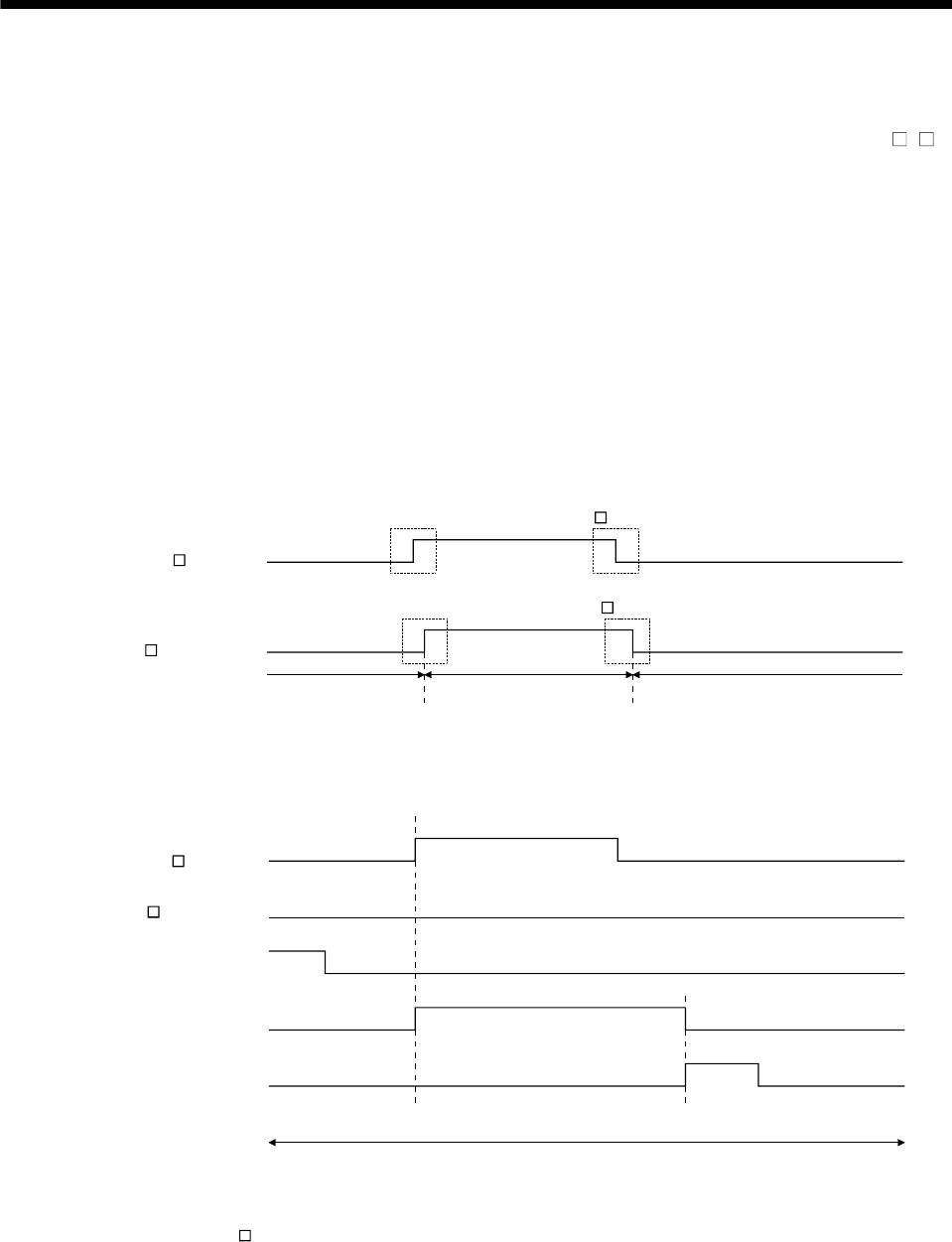
8 - 3
8. TANDEM DRIVE
8.1.3 Changing of drive mode
The changing of modes is performed using ON/OFF of the non-synchronous command signal (ASYN
: is
the group number). Changing of mode can be performed on a group basis.
Changing of drive mode can only be performed when all of the following conditions are satisfied.
• The during smoothing of stopping (SMZ) is on for both the master axis and the slave axis.
• The in-position signal (INP) is ON for both the master axis and slave axis.
• No operation alarm has occurred for both the master axis and slave axis.
• Neither the master axis nor the slave axis is operating.
• They are not being synchronized.
If even one of the conditions is not satisfied, the tandem drive mode change error (operation alarm 50, detail
01) occurs.
(1) Example when drive mode can be changed
Non-synchronous
micro-adjustment mode
Synchronous mode Synchronous mode
ON
OFF
ON
OFF
Non-synchronous
command (ASYN )
In non-synchronous
mode (ASYO )
sscSetCommandBitSignalEx function
(SSC_CMDBIT_AX_ASYN )
sscWaitStatusBitSignalEx function
(SSC_STSBIT_AX_ASYO )
(2) Example when drive mode can not be changed (the in-position signal (INP) of the master axis is OFF)
ON
OFF
ON
OFF
(Note) Operation alarm 50, detail 01
S
y
nchronous mode
ON
OFF
ON
OFF
ON
OFF
Non-synchronous
command (ASYN )
In non-synchronous
mode (ASYO )
In-position (INP)
(master axis)
Operation alarm
(OALM)
Operation alarm reset
(ORST)
Note. When the tandem drive mode change error (operation alarm 50, detail 01) has been set, after returning the Non-synchronous
command signal (ASYN
) to its normal status, turn the operation alarm reset signal (ORST) on to cancel the operation alarm.
When changing from non-synchronous micro-adjustment mode to synchronous mode, of the axis data for
the slave axis, only the data that is valid for the master axis (refer to Section 8.3) is saved from the non-
synchronous micro-adjustment mode. Zero clear and the like is not performed.


















